10 places in the Marche that you should definitely have seen
Ancona
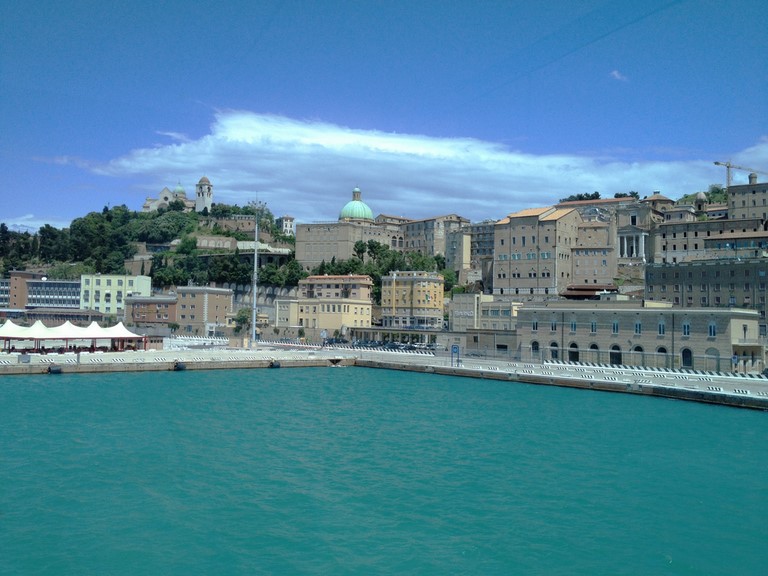
The capital of the Marche region. It has 135000 inhabitants in the city and 82000 in the surrounding area. Today it is the seat of the local administration and the regional parliament.
It is located on the Adriatic coast. The port of Ancona is an outstanding and lively commercial hub, covering an area of more than 3 square kilometres. It plays a central role as one of the most important ports on the Mediterranean. With its ferry and passenger terminals and cargo and container handling areas, it offers a wide range of services.
The port is located on an important international route connecting Italy with Albania, Croatia and Greece. In particular, the Ancona-Igoumenitsa-Patras route is one of the most important connections between Central Europe and Greece. People and goods are efficiently transported here to promote cross-border trade and tourism.
Places of interest
- Trajan's Arch.
- Chiesa di San Domenico.
- Chiesa di Santa Maria della Piazza.
- Chiesa di San Francesco alle Scale.
- Palazzo del Governo.
- Palazzo Benincasa.
- Loggia dei Mercanti.
- Archaeological Museum.
History
Urbino
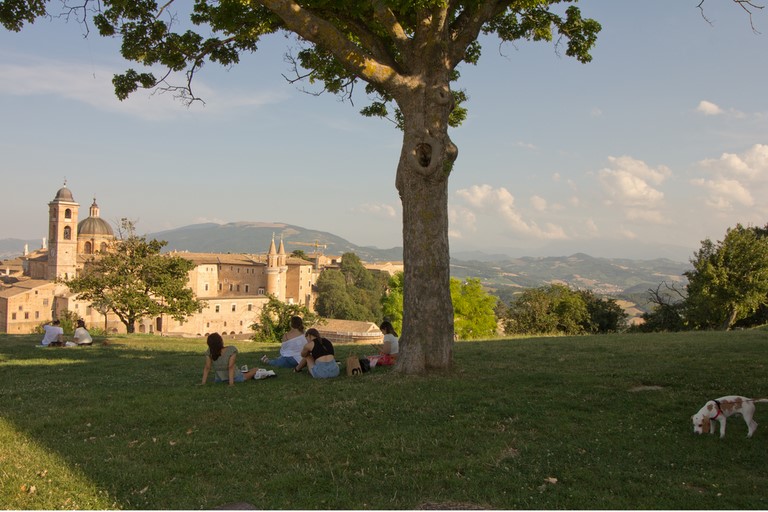
The city of Urbino has a population of 16,000 and is known for its vibrant student population of around 24,000 students.
The picturesque city is built on two hills and has a fascinating double-city structure, also known as "urbs-bino".
In 1998, Urbino was declared a UNESCO World Heritage Site for its rich cultural heritage and well-preserved historic buildings.
The University of Urbino, founded in 1507, is one of the oldest universities in Italy. It still resides in impressive Renaissance buildings and offers an inspiring learning environment for its students.
Places of interest
- Palazzo Ducale
- Casa Natale di Raffaello
- Duomo Santa Maria Assunta, Piazza Duca Federico
- San Domenico
- San Francesco
- Santa Chiara
- San Bernardino
- San Giuseppe
- San Giorgio
- Oratorio di San Giovanni Battista
History
Ascoli Piceno
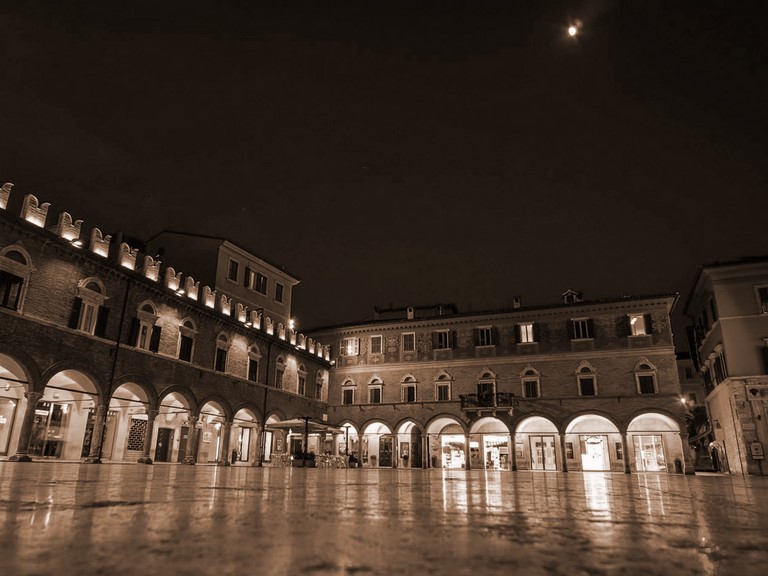
Ascoli Piceno, a city of just under 55,000 inhabitants, is located in the southern Marche region and is the capital of the province. It is located about 30 km inland from the Adriatic coast and rises a proud 153 metres above sea level. The city is surrounded by three imposing mountain ridges and stretches along the rivers Tronto and Torrente Castellano. Known as the "city of 100 towers", Ascoli Piceno enchants visitors with its impressive architecture consisting of medieval fortresses, churches and palaces. The picturesque location in the southern part of the Marche region and the proximity to the Adriatic coast offer visitors an authentic Italian holiday experience. In addition, the city is surrounded by two national parks, offering the opportunity to explore both the coastal landscape and the mountainous region and enjoy the natural beauty of the surroundings. The city is also known for its olive ascolana, a gastronomic speciality.
Places of interest
- Piazza del Popolo with Palazzo dei Capitani del Popolo and Chiesa di San Francesco
- Piazza Arringo & Pinacoteca Civica
- Cathedral of Ascoli Piceno
- Caffè Meletti
- Chiesa dei Santi Vincenzo e Anastasio:
- Sant’Emidio alle Grotte:
- Chiesa di San Pietro Martire:
- Chiesa di San Tommaso Apostolo:
- Chiesa della Scopa:
- Forte Malatesta
- River Tronto & Ponte Romano di Solestà
- The Quintana
History
Loreto

Loreto is a town in the province of Ancona, situated on a hill 127 metres above sea level, overlooking the Adriatic Sea and between the valleys of the Potenza and Musone rivers. It is twinned with other places where Mary is venerated, such as Altötting, Fátima, Czestochowa and Lourdes . It is a small and charming municipality of 17 square kilometres with a population of about 12,000, a stone's throw from an enchanting sea and in a region where every little village preserves artistic treasures and historical memories as few other places in the world do.
Loreto is a famous Italian place of pilgrimage. The House of the Holy Family is venerated there and the Lauretan Litany originated here. It is the largest Marian shrine in Italy. Worldwide, the liturgical commemoration of "Our Lady of Loreto" is celebrated on 10 December.
Places of interest
- Basilica della Santa Casa
- Palazzo Apostolico
- Museo Pinacoteca
History
Macerata
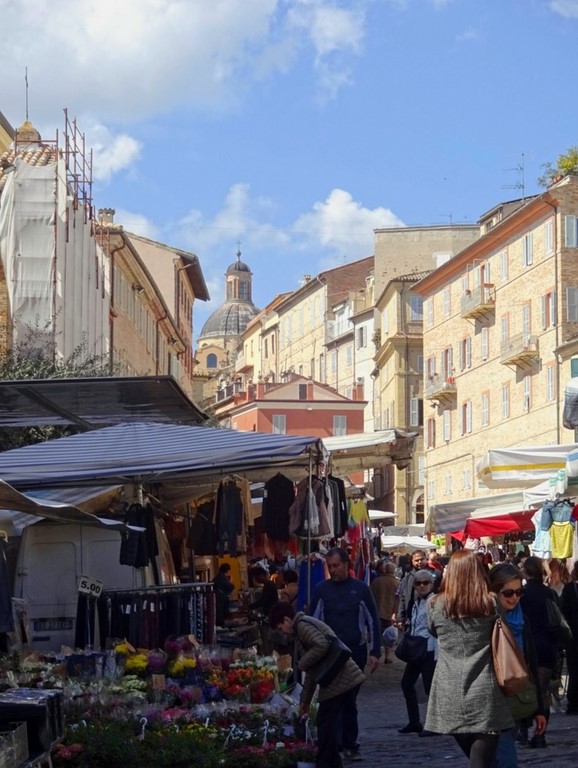
Macerata is the capital of the province of the same name in the Marche region. It is a city of 43,000 inhabitants that is also home to 13,000 students. The city is situated on a hill and is rich in Renaissance, Baroque and 18th century works of art. The heart of the city is the Piazza della Libertà, from which roads lead in all directions. The main street, Corso Matteotti, is known for its beautiful town palaces in shades of pink and ochre.
Macerata is also known for its opera festival, which takes place every year between the end of July and the beginning of August. The open-air opera stage Sferisterio has room for 3000 visitors.
Places of interest
- Piazza della Libertà with the town hall, the clock tower , the church of San Paolo, the university palace and a box
- Sferisterio Arena
- Cathedral
- Musei Civici di Palazzo Buonaccorsi.
- Palazzo dei Diamanti
- City wall and city gates
History
Jesi
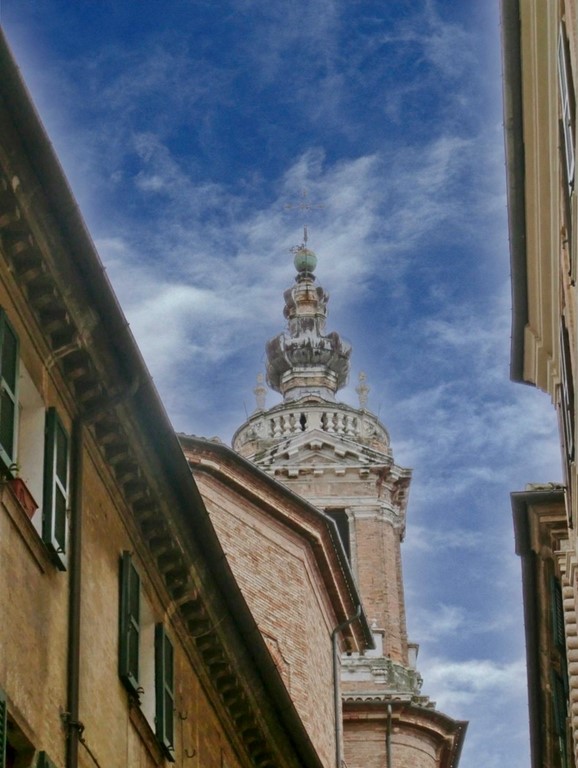
Places of interest
- Piazza della Repubblica
- Piazza Federico II
- Dom
- Palazzo Pianetti
- Stadtmauern
- Teatro Pergolesi
- Palazzo della Signoria
- Museo Federico II Stupor Mundi im Palazzo Ghislieri Nuovo, ein innovatives multimediales Museum zu Friedrich II.
History
Offida
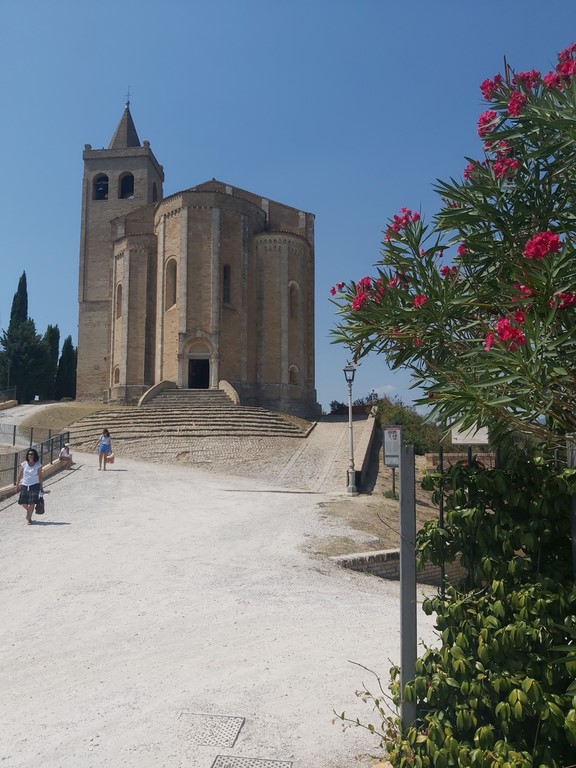
Offida is a picturesque medieval town of about 4700 inhabitants spread over 50 m². It is situated on a hill in the middle of a breathtaking landscape and offers a charming mix of historical architecture and rich culture. Particularly noteworthy is the art of lace-making, which is still kept alive here and is displayed in its own museum.
Carnival is also celebrated here. On Carnival Friday, a bull (nowadays just a disguise) is chased through the streets and "killed" at the end in the Piazza del Popolo in front of the town hall.Places of interest
- Chiesa die Santa Maria Della Rocca .
- Teatro Serpente Aureo,
- Santuario del Beato Bernard
- Chiesa dell'Addolorata
- Museo di Offida
- Monument to the Lace Makers
History
Recanati
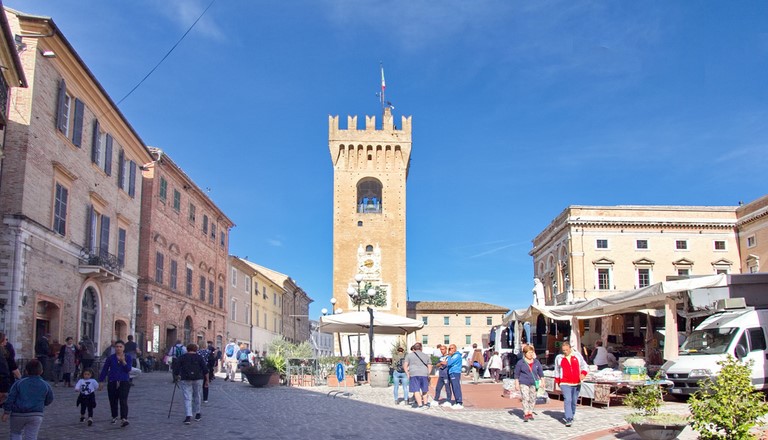
Recanati is a charming town of just over 20,000 inhabitants in the province of Macerata. With its rich history, artistic significance and picturesque hilltop location, it attracts visitors from all over the world. Known as the birthplace of the poet Giacomo Leopardi and the tenor Beniamino Gigli, Recanati offers an inspiring atmosphere that invites visitors to immerse themselves in the world of poetry, music and art. With its charming cobbled streets, historic buildings and panoramic views of the surrounding countryside, Recanati is a real gem to discover.
Places of interest
- Casa Leopardi
- Colle dell'Infinito
- Duomo di Recanati mit dem Sarkophag Papst Gregor XII.
- Teatro Persiani
- San Domenico
- Palazzo Comunale
- Porta MarinaMuseo Civico Villa Colloredo Mels
- Museo della Musica MUM & Museo Beniamino Gigli
- Museo dell'Emigrazione Marchigiana
History
Cingoli
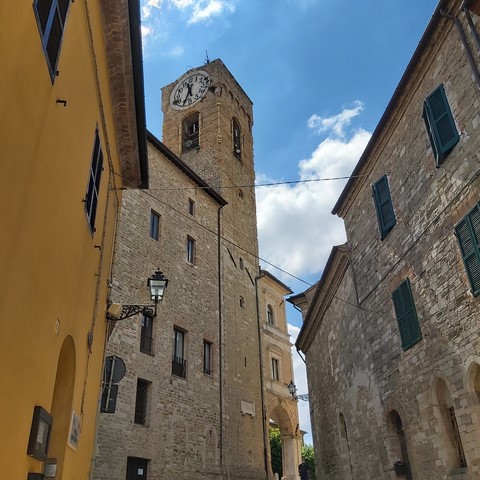
Cingoli, also known as the "Balcony of the Marches", is a picturesque small town of about 10,000 inhabitants, situated on a hill with a breathtaking panoramic view of the surrounding countryside. It is an ideal place for nature lovers, hikers and photographers. Cingoli is rich in historical heritage with its ancient city walls, medieval alleys and an impressive cathedral. The village also has a vibrant culture with art exhibitions, music festivals and traditional gastronomic experiences. A visit to Cingoli promises a charming blend of history, nature and local culture.
Places of interest
- Piazza Vittorio Emanuele II
- Kathedrale Santa Maria Assunta
- Rocca
- Santuario della Madonna di San Paolo
- Museo Archeologico Statale di Cingoli
History
Fabriano

Fabriano, a town of about 30,000 inhabitants, is a worthwhile destination. The well-preserved old town enchants with its narrow streets, historic buildings and picturesque squares. Fabriano is famous for its papermaking, and the paper museum shows the history and techniques of this tradition. Art lovers will be delighted by the Pinacoteca with medieval paintings, including works by Gentile da Fabriano. The natural beauty of the surrounding countryside with hills, valleys and rivers offers opportunities for outdoor activities. Gastronomically, Fabriano treats visitors to regional specialities such as truffles, pasta and wine. Visitors can also purchase handmade products such as ceramics and leather goods. The town also offers a wide range of shops and boutiques. Fabriano combines history, art, nature and culture to create an inviting destination for all tastes. Since 2013, Fabriano has held the title of UNESCO Creative City.
Places of interest
- The Paper Museum (Museo della Carta)
- The Picture Gallery (Pinacoteca Civica Bruno Molajoli)
- The Cathedral of Fabriano (Cattedrale di San Venanzio)
- The Church of San Domenico
- The Rocca Flea Fortress